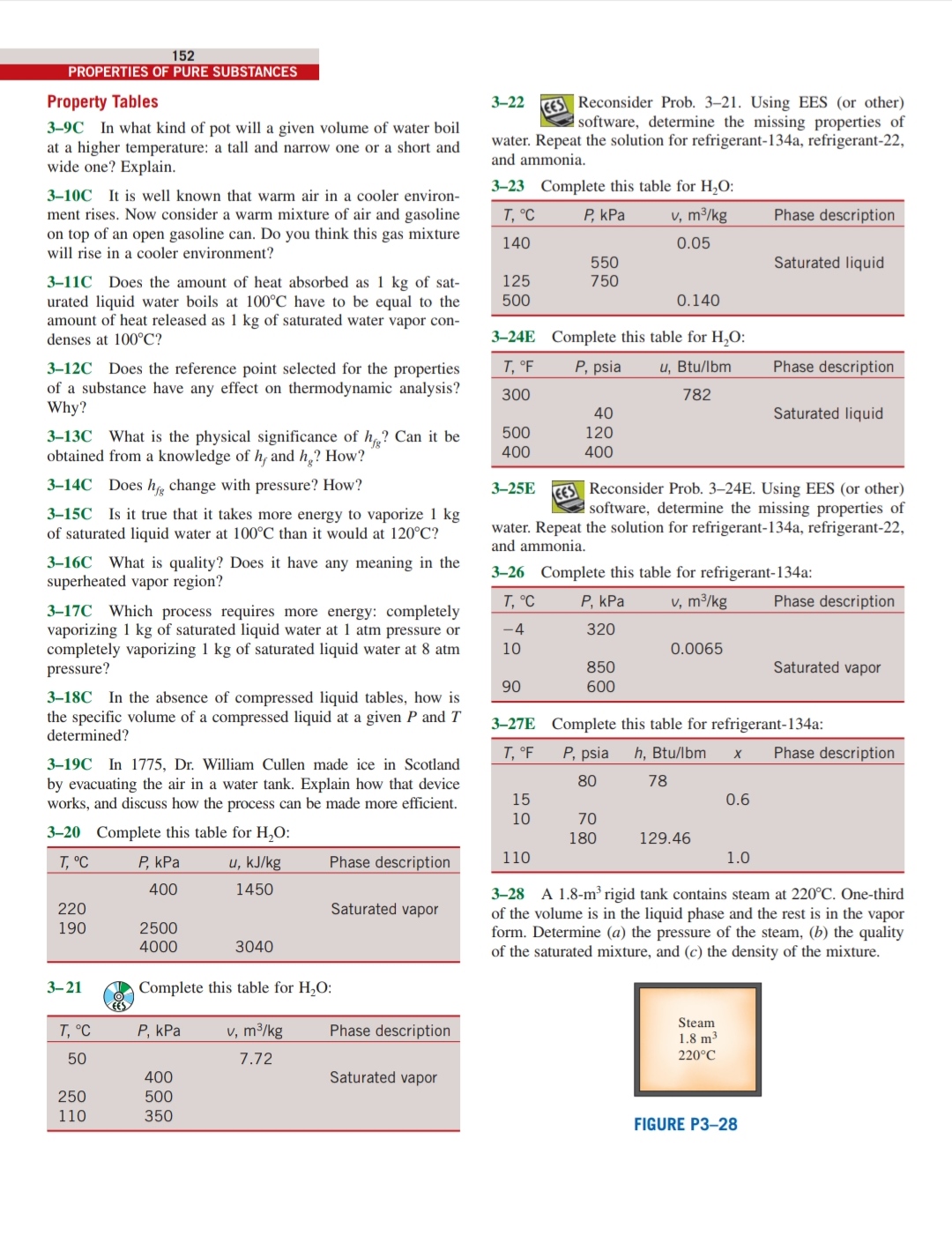Answered step by step
Verified Expert Solution
Question
1 Approved Answer
152 PROPERTIES OF PURE SUBSTANCES Property Tables 3-9C In what kind of pot will a given volume of water boil at a higher temperature:

152 PROPERTIES OF PURE SUBSTANCES Property Tables 3-9C In what kind of pot will a given volume of water boil at a higher temperature: a tall and narrow one or a short and wide one? Explain. 3-10C It is well known that warm air in a cooler environ- ment rises. Now consider a warm mixture of air and gasoline on top of an open gasoline can. Do you think this gas mixture will rise in a cooler environment? 3-11C Does the amount of heat absorbed as 1 kg of sat- urated liquid water boils at 100C have to be equal to the amount of heat released as 1 kg of saturated water vapor con- denses at 100C? 3-12C Does the reference point selected for the properties of a substance have any effect on thermodynamic analysis? Why? 3-13C What is the physical significance of hig? Can it be obtained from a knowledge of h, and he? How? 3-14C Does hfg change with pressure? How? 3-15C Is it true that it takes more energy to vaporize 1 kg of saturated liquid water at 100C than it would at 120C? 3-16C What is quality? Does it have any meaning in the superheated vapor region? 3-17C Which process requires more energy: completely vaporizing 1 kg of saturated liquid water at 1 atm pressure or completely vaporizing 1 kg of saturated liquid water at 8 atm pressure? 3-18C In the absence of compressed liquid tables, how is the specific volume of a compressed liquid at a given P and T determined? 3-19C In 1775, Dr. William Cullen made ice in Scotland by evacuating the air in a water tank. Explain how that device works, and discuss how the process can be made more efficient. 3-20 Complete this table for HO: 3-22 S Reconsider Prob. 3-21. Using EES (or other) software, determine the missing properties of water. Repeat the solution for refrigerant-134a, refrigerant-22, and ammonia. 3-23 Complete this table for HO: T, C P, kPa v, m/kg Phase description 140 0.05 550 Saturated liquid 125 750 500 0.140 3-24E Complete this table for HO: P, psia u, Btu/lbm T, F 300 40 500 400 120 400 3-25E Phase description 782 Saturated liquid EES Reconsider Prob. 3-24E. Using EES (or other) software, determine the missing properties of water. Repeat the solution for refrigerant-134a, refrigerant-22, and ammonia. 3-26 Complete this table for refrigerant-134a: v, m/kg Phase description T, C -4 P, kPa 320 10 0.0065 850 Saturated vapor 90 600 3-27E Complete this table for refrigerant-134a: T, F P, psia h, Btu/lbm X Phase description 80 78 15 0.6 10 70 180 129.46 T, C P, kPa 400 u, kJ/kg 1450 Phase description 110 1.0 220 Saturated vapor 190 2500 4000 3040 3-28 A 1.8-m rigid tank contains steam at 220C. One-third of the volume is in the liquid phase and the rest is in the vapor form. Determine (a) the pressure of the steam, (b) the quality of the saturated mixture, and (c) the density of the mixture. 3-21 Complete this table for HO: T, C P, kPa v, m/kg Phase description | 50 400 250 500 110 350 7.72 Steam 1.8 m 220C Saturated vapor FIGURE P3-28
Step by Step Solution
There are 3 Steps involved in it
Step: 1
39C In a tall and narrow pot the volume of water is concentrated in a smaller vertical space This means that the water is in contact with a smaller surface area resulting in less heat transfer to the ...
Get Instant Access to Expert-Tailored Solutions
See step-by-step solutions with expert insights and AI powered tools for academic success
Step: 2

Step: 3

Ace Your Homework with AI
Get the answers you need in no time with our AI-driven, step-by-step assistance
Get Started


